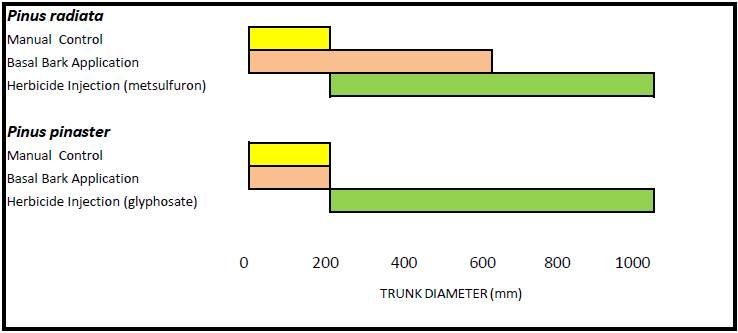Choosing a control method
In order to determine how best to treat wilding pines on your property, you should consider two main factors:
Size of Trees
The accepted method for recognising the size of trees is to measure the diameter of the trunk at breast height (DBH). Of course, not all trees are the same size, but very often wilding pines will be of the same age class, and fit within a range of, say, 400mm trunk diameter +/- 100mm.
Tree Species
The two most common species of wilding pine encountered in the Marlborough Sounds are radiata pine (Pinus radiata) and maritime pine (Pinus pinaster). To tell them apart, use the following diagnostic test.
Pinus radiata
Dark green foliage
3 long, fine needles
No spikes on pine cones
Pinus pinaster
Olive green foliage
2 long, stout needles
Spikes on pine cone
Elongated pine cone
If the wilding pine doesn’t fit either of these descriptions, it is likely to be another species. Occasional Mexican weeping pine (Pinus patula) and Bishop pine (Pinus muricata) are encountered in the Sounds. It is anticipated increasing numbers of wilding Douglas fir (Pseudotsugamenziesii) are also likely to be encountered in the Sounds. All these species can be treated in the same manner as Pinus radiata.
Once you know these key factors, you will be able to work out what method is best for your property based on the following table.


